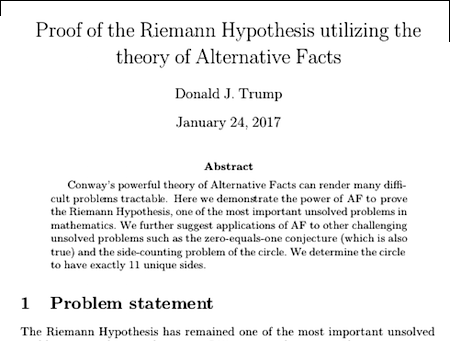Marc Abrahams's Blog, page 230
January 31, 2017
Classification: The Worst Cat
“The Worst Cat” tumblr, which features a hippopotamus, is a meditative essay on the power of classification.

January 30, 2017
Classification and Computer Generation of Necktie Patterns
Is it possible to create a simple computerised system to cover all characteristics of necktie patterns – and that can also generate patterns similar to existing neckties? Researchers Hiroshi Fukuda, Tomoko Saito and Gisaku Nakamura of the School of Administration and Informatics, University of Shizuoka, Shizuoka-shi, Shizuoka 422, Japan – as far back as 1994* – said the answer is yes.
They presented their evidence in a paper for the journal Forma, Vol. 9 (No. 1), pp. 67-72, entitled ‘Classification and Computer Generation of Necktie Patterns‘
A full copy of their paper may be found here.
Also see (necktie related research) : Towards perfecting men’s necktie lengths and Neckties and non-linearity avoidance.
*Note: Improbable has not (so far) been able to find any published details of post-1994 work on computer classification of necktie patterns.
BONUS: Those who wish to purchase a necktie depicting the crystal structure of dumortierite can start their search here at the website of Dr. Robert Krickl.

January 29, 2017
Coffee Grounds and Baked Goods: The Next Frontier
Coffee and baked goods delight millions of snack-hungry people. Coffee grounds and baked goods are potentially a delightful variant on the traditional combination. This study explores that territory:
 “Use of spent coffee grounds as food ingredient in bakery products,” Nuria Martinez-Saez [pictured here], Alba Tamargo García, Inés Domínguez Pérez, Miguel Rebollo-Hernanz, Marta Mesías, Francisco J. Morales, María A. Martín-Cabrejas, and Maria Dolores del Castillo, Food Chemistry, vol. 216, 2017, pp. 114-122. The authors, at the Institute of Food Science, Technology and Nutrition, Madrid, Spain, report:
“Use of spent coffee grounds as food ingredient in bakery products,” Nuria Martinez-Saez [pictured here], Alba Tamargo García, Inés Domínguez Pérez, Miguel Rebollo-Hernanz, Marta Mesías, Francisco J. Morales, María A. Martín-Cabrejas, and Maria Dolores del Castillo, Food Chemistry, vol. 216, 2017, pp. 114-122. The authors, at the Institute of Food Science, Technology and Nutrition, Madrid, Spain, report:
“The present research aimed to evaluate the use of spent coffee grounds (SCG) from instant coffee as a food ingredient and its application in bakery products…. SCG were incorporated in biscuit formulations for the first time. Low-calorie sweeteners and oligofructose were also included in the food formulations. Nutritional quality, chemical (acrylamide, hydroxymethylfurfural and advanced glycation end products) and microbiological safety and sensory tests of the biscuits were carried out.”
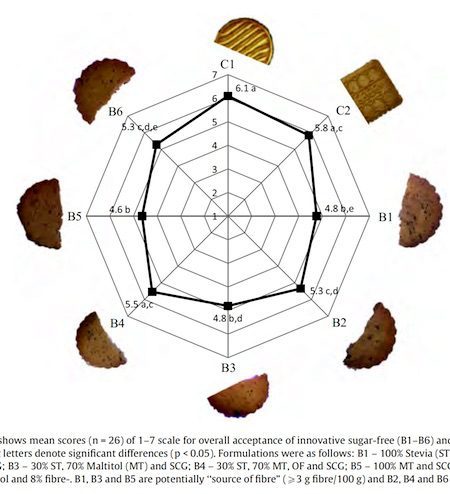

January 28, 2017
Infrastructure and appearances: “made almost entirely of wood”
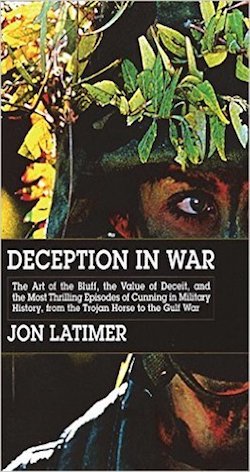 “[The] Germans themselves made extensive use of decoys to protect airfields and other targets. One example in the Netherlands was constructed with particular care, made almost entirely of wood and including hangars, gun positions, aircraft and vehicles. However, it took so long to build that Allied photo interpreters had plenty of time to observe it. The day after it was finished, a solitary RAF plane flew over and circled the field once before dropping a large wooden bomb.”
“[The] Germans themselves made extensive use of decoys to protect airfields and other targets. One example in the Netherlands was constructed with particular care, made almost entirely of wood and including hangars, gun positions, aircraft and vehicles. However, it took so long to build that Allied photo interpreters had plenty of time to observe it. The day after it was finished, a solitary RAF plane flew over and circled the field once before dropping a large wooden bomb.”
— from the book Deception in War, by John Latimer, Overlook Press, 2003, ISBN 978-1585673810.
(Thanks to Kate Pearce for bringing this to our attention.)

January 26, 2017
Recognizing cattle from their nose prints
Although computer-assisted facial-recognition techniques for cow-indentification are making considerable progress (see previous), there are other ways of doing so – nose prints for example.
Researchers Ary Noviyanto and Aniati Murni Arymurthy of the
Faculty of Computer Science, Universitas Indonesia, Depok, Indonesia, outline the details in a comprehensve report for the journal Computers and Electronics in Agriculture, 99 (2013) 77–84.
“The muzzle pattern from total 48 individuals of two common races of the beef cattle in Indonesia, i.e., Balinese cow and PO cow (hybrid Ongole cow) have been collected. The muzzle patterns have been printed on a piece of paper 30 times for each individual using black ink. Unfortunately, it is very hard to get a good data so that not all of the data can be used. The difficulties of the data capturing include the wet condition of the cattle nose and the cattle’s nervous feeling. The sweat glands of the cattle are quite big, which may leads to the wetness of the nose. The nose wetness leads a smeared muzzle print. In fact, the upper part of the muzzle is wetter compared to the middle part or the lower part. […]
The equipment and materials used in the data capturing are A5-size papers, stamp black ink, cottons and tissues. The procedures of data capturing are presented as follows:
1. The cattle’s head has to be kept still using a rope.
2. Cleaning the nose to eliminate snot using tissues.
3. Once the snot is clear, apply a thin ink layer using cottons on the nose and then print on the paper with upward rolling movement […]”
Their methods, say the authors, show promise when compared to ear-tagging and tattooing. They do point out though, that at the time of writing (2012)
“No method can perfectly recognize each beef cattle correctly.”

January 25, 2017
Can Consumers Recognize the Taste of their Favorite Beer? (podcast #99)
Do people delude themselves about prizing — or even recognizing — recognizing the taste of their favorite beer? A research study explores that very question, and we explore that study, in this week’s Improbable Research podcast.
SUBSCRIBE on Play.it, iTunes, or Spotify to get a new episode every week, free.
This week, Marc Abrahams discusses a published taste-this-beer, taste-that-beer study. Yale/MIT/Harvard biomedical researcher Chris Cotsapas lends his voice, and his scientific expertise, and his opinions —with dramatic readings from a research study you may have overlooked.
For more info about what we discuss this week, go explore:
“Probably Not the Best Lager in the World: Effect of Brands on Consumers’ Preferences in a Beer Tasting Experiment,” Matteo Maria Galizzi and Christian Garavaglia, Liuc Papers in Economics, no. 254, Serie Economia e Impresa, vol. 65, October 2012.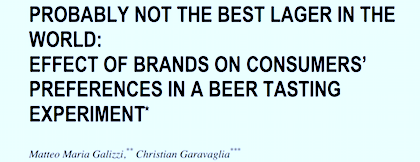
The mysterious John Schedler or the shadowy Bruce Petschek perhaps did the sound engineering this week.
The Improbable Research podcast is all about research that makes people LAUGH, then THINK — real research, about anything and everything, from everywhere —research that may be good or bad, important or trivial, valuable or worthless. CBS distributes it, on the CBS Play.it web site, and on iTunes and Spotify).

We are informed that Donald J. Trump won an Ig Nobel Prize…
We were informed today that the author of a mathematics paper has been awarded an Ig Nobel Prize. This is a surprise to us, because we award the Ig Nobel Prizes, and we are unaware that we ever awarded anything to this person, Donald J. Trump. The Ig Nobel Prizes honor achievements that make people laugh, then think.
The mathematics paper is called “Proof of the Riemann Hypothesis utilizing the theory of Alternative Facts“. Donald J. Trump is credited as the author.
The paper carries the publication date January 24, 2017. The most recent Ig Nobel Prize ceremony was held four months earlier, on September 22, 2016, at Harvard University. Donald J. Trump was not among the winners that day, nor in any of the previous 25 Ig Nobel Prize ceremonies.
We did some research, comparable in depth and value to the research described in the paper. We learn that Donald J. Trump is credited with authorship of other documents. Here is a much-self-circulated photo of Donald J. Trump, in which he is credited with authoring a document:
All we can say, having received the unexpected news, is this — Congratulations, in theory, to Mr. Donald J. Trump, no matter what his achievement is or isn’t, and no matter what he may be or not be.
BONUS: Some background info about the Riemann Hypothesis.
BONUS: A related historical note: The 2002 Ig Nobel Prize for economics was awarded (by us) to the executives, corporate directors, and auditors of twenty-some-odd corporations, for adapting the mathematical concept of imaginary numbers for use in the business world.
UPDATE (January 25, 2017, 11:20 am): We have just been informed that we are “not permitted, under United States law” to “publicly disclose” certain details of this matter. We are, as the saying goes, taking this under advisement.

January 24, 2017
What can happen, medically, to people who swallow lots of chewing gum
Some people chew lots of chewing gum, and then swallow what they have chewed. Swallowing gum can lead to problems, as this medical study explains: “Chewing gum bezoars of the gastrointestinal tract,” David E. Milov, Joel M. Andres, Nora A. Erhart, and David J. Bailey, Pediatrics, vol. 102, no. 2 (1998): e22-e22. The authors write:
“In summary, chewing gum should not be swallowed and not given to children who cannot understand this point.”

That medical report is about children. Some adults, too, chew and swallow lots of gum. A January 23, 2017 news report, by The Cut, looks at one grown-up gum chew-and-swallower: “Sean Spicer Chews and Swallows 35 Pieces of Gum Every Day Before Noon“.

Second-hand smoking in James Bond movies [study]
As international politics comes to resemble the over-imaginative plotlines of James Bond movies, some research publications choose to look more closely at the details of those movies. This new study looks at smoking:
“James Bond’s Smoking Over Six Decades,” Nick Wilson and Anne Tucker, Tobacco Control, epub January 16, 2017. The authors, at the University of Otago, New Zealand, report:
“We aimed to examine smoking-related content in all 24 James Bond movies in the Eon Productions series from 1962 to 2015. There were favourable downward trends for any smoking by James Bond, and for tobacco-related spy-gadgetry. Around 20% of Bond’s 60 sexual partners smoked in each decade, and most recently in 2012. There were regular mentions of smoking risks to health (starting from 1967) and product placement of branded packs was present in two movies. Overall, the persisting smoking content remains problematic from a public health perspective, especially given the popularity of this movie series.”
Here’s further detail from the study:
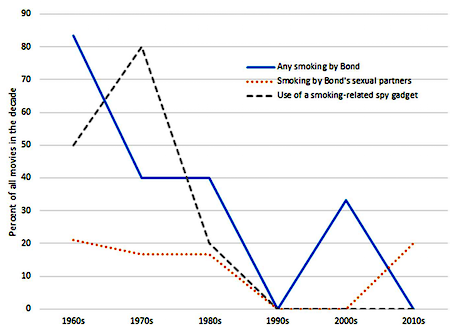
(Thanks to George Thomson for bringing this to our attention.)
Here are two movies, of a sort, of James Bond smoking in those James Bond movies:

Science in sealed envelopes, for priority or posterity’s sake, in France
Michèle Audin, writing for Oulipo, tells the history of les plis cachetés:
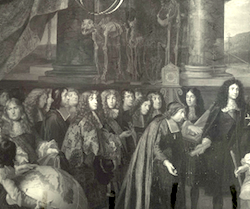 [THIS IS A MACHINE TRANSLATION:] “Let me begin by reminding you (or tell you) the ancient practice (and a tad outdated) sealed envelopes. Suppose you make a discovery you deem worthy of interest. You want while you posterity attributed maternity (or paternity, if you are a man) of the thing. But for one reason or another, you do not want to publish it. You will then go to the Academy of Sciences and you drop a fold (ie a letter, a piece of paper), which shall seal (with wax, yes) under your eyes (it is this operation that transforms the fold ‘sealed envelope’), which is assigned a serial number and is preserved.You have certainly noticed that, during this series of operations, one has knowledge of the content of your fold.
[THIS IS A MACHINE TRANSLATION:] “Let me begin by reminding you (or tell you) the ancient practice (and a tad outdated) sealed envelopes. Suppose you make a discovery you deem worthy of interest. You want while you posterity attributed maternity (or paternity, if you are a man) of the thing. But for one reason or another, you do not want to publish it. You will then go to the Academy of Sciences and you drop a fold (ie a letter, a piece of paper), which shall seal (with wax, yes) under your eyes (it is this operation that transforms the fold ‘sealed envelope’), which is assigned a serial number and is preserved.You have certainly noticed that, during this series of operations, one has knowledge of the content of your fold.
Even if it seems a bit absurd way of doing science, this practice has been used once or another, by serious scientists…. Well, and that happens next? Well, the sealed envelope can be opened as soon as the author on request. Otherwise, it must be open after a hundred years….”
The tradition arose with, and is carried on by, l’Académie des sciences.

Marc Abrahams's Blog
- Marc Abrahams's profile
- 14 followers




